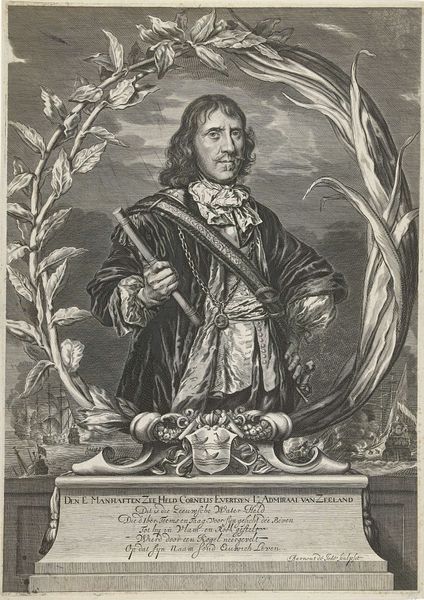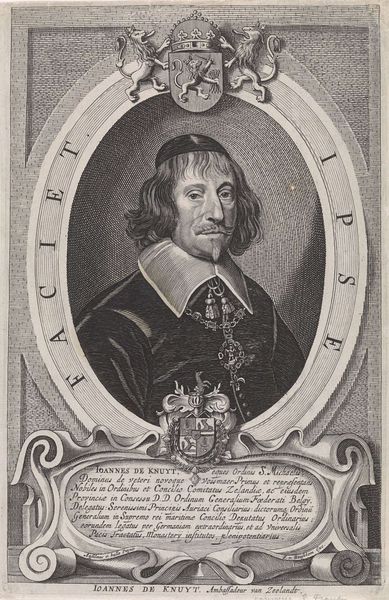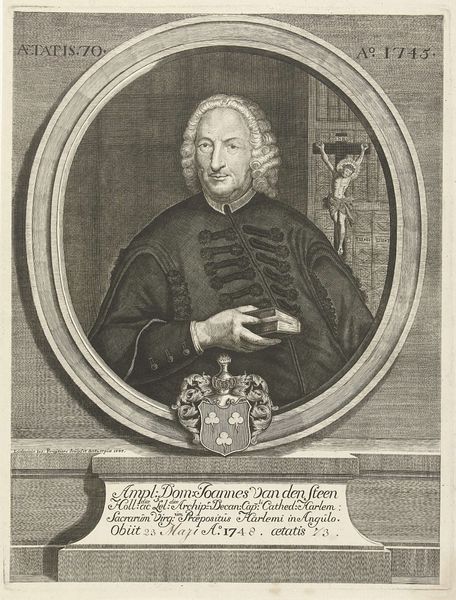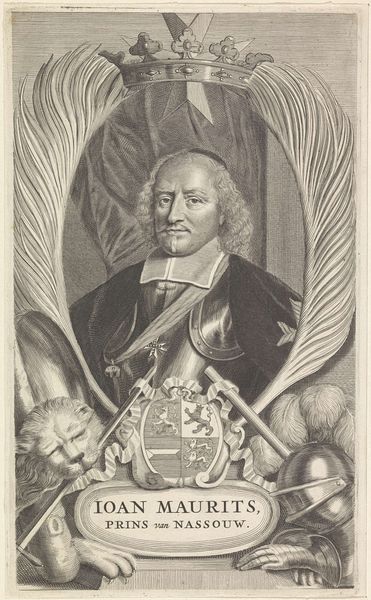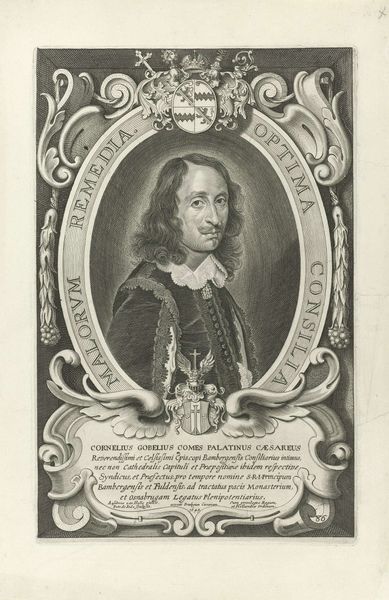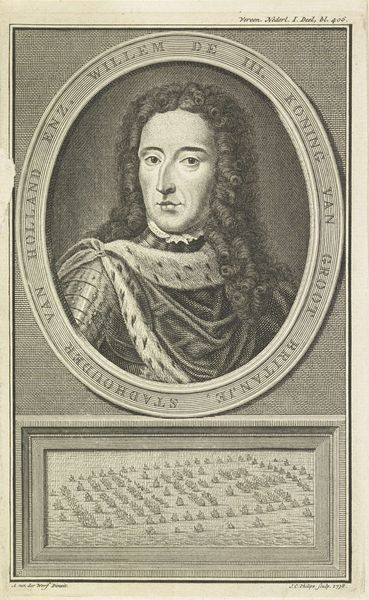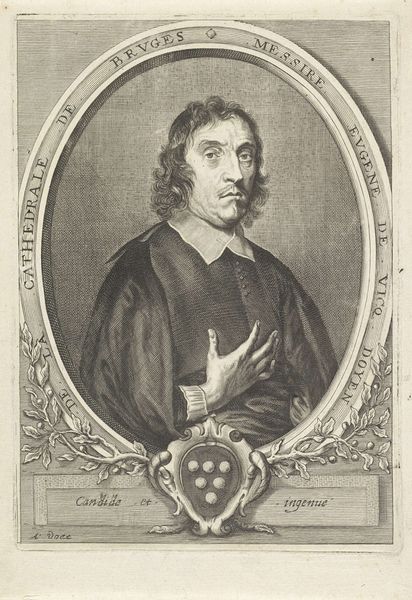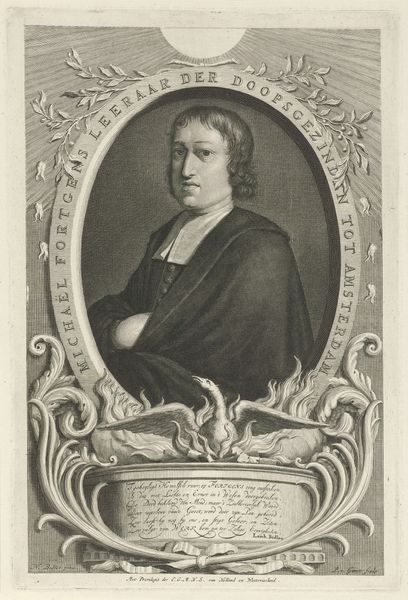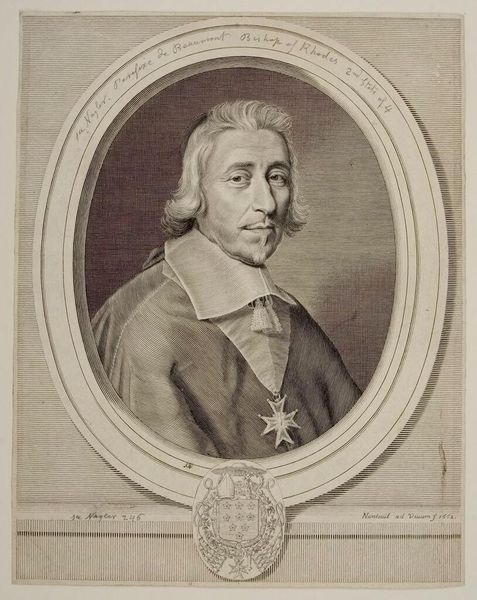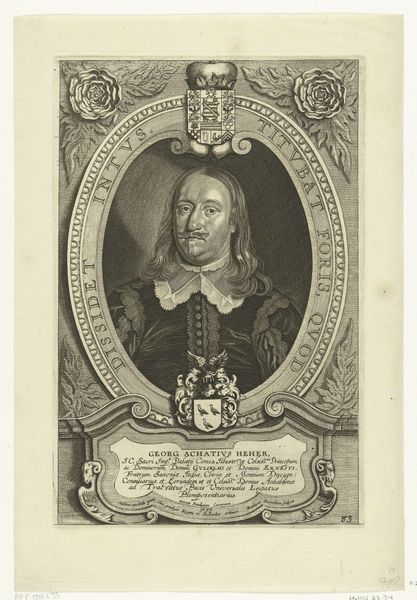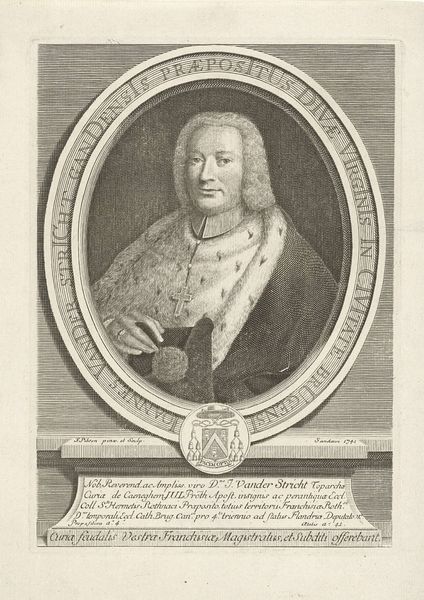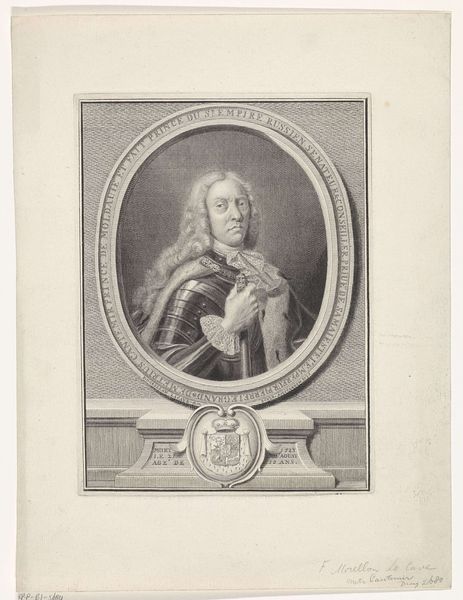
print, engraving
#
portrait
#
baroque
# print
#
genre-painting
#
engraving
Dimensions: height 427 mm, width 298 mm
Copyright: Rijks Museum: Open Domain
Curator: This print from 1668 by Reinier van Persijn, titled "Portret van Jan Corneliszoon Meppel", depicts Meppel as an admiral. My first impression is of meticulously crafted layers of detail, look at all that cross-hatching, all made of engraving on paper! Editor: It evokes a real sense of power, doesn't it? The composition, the naval background, it’s all designed to communicate status within a society deeply invested in maritime trade. Look how it connects seafaring and thus trade, with wealth and prominence within Dutch society at that time. Curator: Absolutely. If you study it closer, all those material components become meaningful, the way the chain of office seems physically substantial, pressing down onto his chest – the ink itself and labor in making it emphasizes the admiral’s worldliness and status. The map under his arm also echoes Dutch mercantile activity, with the brass trumpets perhaps being tools or trade themselves. The globe also has a strong suggestion of international trade. Editor: That globe isn't just about trade, it's about empire and its justification during an incredibly complicated time in history. Meppel's role as admiral intersects with Dutch colonialism. How do we reckon with portraits that simultaneously represent personal achievement but are embedded in exploitation? His hand rests upon a globe, in part a symbol of the resources that can be extracted to become instruments. Curator: I find it intriguing that van Persijn chose engraving, a repeatable process. He created something both unique to Meppel and also reproducible for wider distribution, reflecting the early stages of mass visual culture that circulated the power dynamics of the era. How it moved as both art and tool in commerce through workshops. Editor: And whose stories were missing from those visual representations? We see Meppel, the face of Dutch maritime power, but we don't see the people and cultures affected by the Dutch West India Company. Prints like these weren't just records of achievement, they shaped perceptions and reinforced power structures. Curator: Thinking about the print this way shows a dialogue of intent to record power alongside the mechanisms needed to create it, the social conditions of its production, which also reveals much about its meaning. Editor: It is this complex interplay that can keep our interpretations honest, seeing beyond surface representations toward what images obscure or render invisible.
Comments
No comments
Be the first to comment and join the conversation on the ultimate creative platform.
